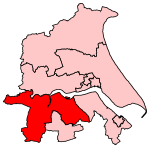Old Rectory, Epworth

The Old Rectory in Epworth, Lincolnshire is a Queen Anne-style building, rebuilt in 1709, which has been restored and is now the property of the Methodist Church of Great Britain, who maintain it as a museum. The rectory was home to the rector of Epworth from 1697 to 1735, the Reverend Samuel Wesley, his wife Susanna and their 19 children, one of whom, John Wesley, grew up to become a founder of Methodism. On 9 February 1709, while the Wesleys were resident, a fire burnt down the wooden rectory and it was rebuilt in brick. The Old Rectory is a Grade I listed building.In 1954 the Church of England sold the rectory to the British Methodist Church, who purchased it with financial support from the World Methodist Council. The building was restored by Thomas Rayson and some of the external features were returned to how the Wesleys would have known the house. The Old Rectory is managed by a board of trustees appointed by the British Methodist Conference and the World Methodist Council. The chair of trustees (2015) is the Rev. Graham Carter, a past president of the Methodist Conference.It is the site of supposed paranormal events that occurred in 1716, while the Wesley family was living in the house.
Excerpt from the Wikipedia article Old Rectory, Epworth (License: CC BY-SA 3.0, Authors, Images).Old Rectory, Epworth
Mowbray Street,
Geographical coordinates (GPS) Address Nearby Places Show on map
Geographical coordinates (GPS)
| Latitude | Longitude |
|---|---|
| N 53.52303 ° | E -0.81717 ° |
Address
Mowbray Street
DN9 1HB
England, United Kingdom
Open on Google Maps








